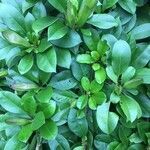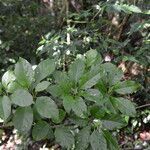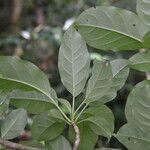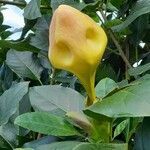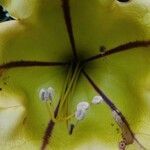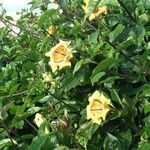High climbing hemi-epiphyte or cultivated shrub to 1.5 m tall. Leaves broadly elliptical, coriaceous, often drying shiny, mostly obtuse at each end or short acuminate apically, glabrous, petioles slender, 3-5 cm long. Pedicels stout, sometimes tuberculate. Flowers showy, the calyx tubular or campanulate, 4-9 cm long, angled and inflated, appearing slender or stout when dried, splitting 1/4_3/4 the way down into 3-5 lobes, the lobes slender or broad, mostly apiculate, This content downloaded from 192.104.39.2 on Tue, 14 May 2013 16:07:58 PMAll use subject to JSTOR Terms and Conditions1973] D'ARCY-FLORA OF PANAMA (Family 170. Solanaceae) 679 glabrous outside, somewhat succulent; the corolla fleshy, craterform, yellow or golden colored, becoming orange-brown with age, 5 purplish ribs mostly present within, the tube slender, 7-15 mm long and included or partly exserted from the calyx, abruptly expanded into a large limb (cup), 6-12 cm in diameter, the lobes rotund, entire to erose margined, glabrous outside, pilose for a distance below the point of filament insertion; filaments straight or slightly geniculate at the point of insertion, glabrous, the anthers 6-8(-9) mm long; ovary mostly inferior in flower. Fruit not seen.
More
A climber or woody vine. It climbs over vegetation nearby. The vines can be 30 m long. Tendrils and roots can form from each node. Leaves are on the main vine and side branches. They are thick and dark green. They can be 15 cm long by 7 cm wide. The flowers are large. They can be 25 cm long and are bell shaped. Plants flower at night and have a strong scent. The fruit are large and yellow with many seeds.
